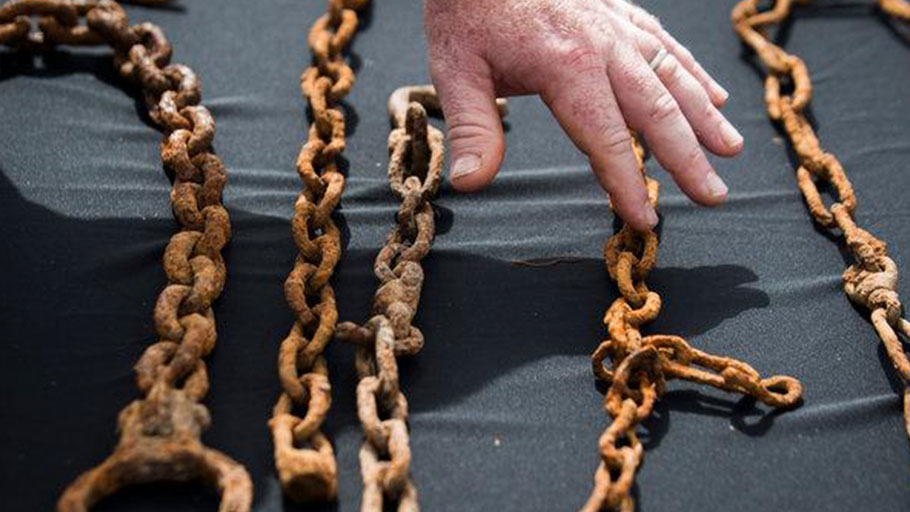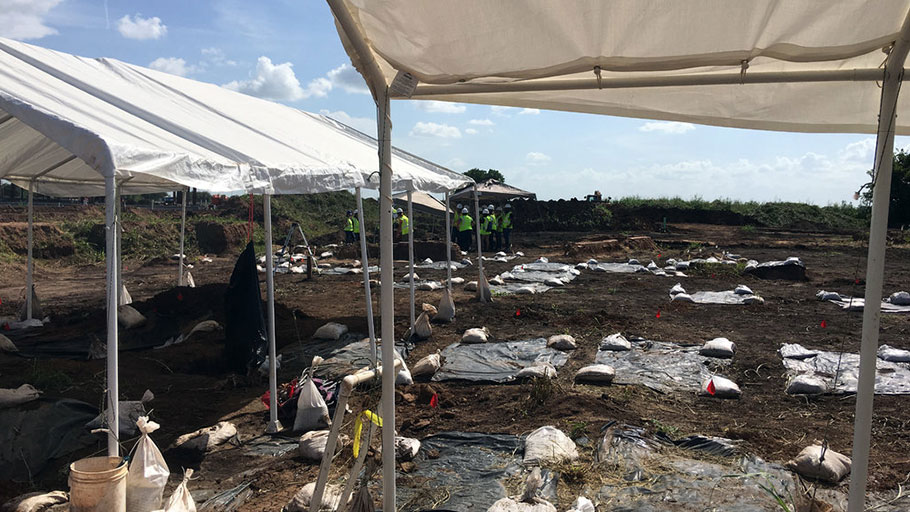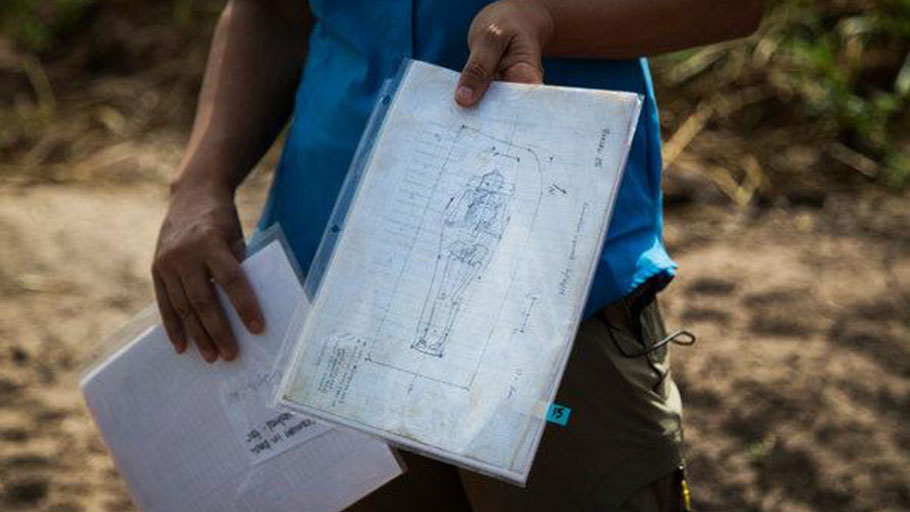A drawing of one of the burials discovered at the site of the James Reese Career and Technical Center in Sugar Land, Tex.
An African-American burial ground recently unearthed in Texas reveals details about an ugly chapter in the history of the American South.
By The New York Times Editorial Board —
Americans who grew up with the fiction that slavery was confined to the South — and that the North had always been “free” — learned differently in 1991, when construction workers stumbled upon the skeletal remains of more than 400 Africans at a site in New York City that has since been designated the African Burial Ground National Monument. The catalog of injuries etched into the bones of the men and women who labored to build, feed and protect Colonial-era New York includes muscles so violently strained they were ripped away from the skeleton, offering a grisly portrait of what it was like to be worked to death in bondage.
A similar portrait is emerging in Sugar Land, Tex., a suburb southwest of Houston, where researchers are examining the remains of about 95 African-Americans whose unmarked graves were discovered this year. The dead are almost certainly victims of the second system of slavery that arose when Southerners set out to circumvent the 13th Amendment of 1865, which outlawed involuntary servitude except as punishment for criminal conviction.
Those states imposed what the Pulitzer Prize-winning writer Douglas Blackmon rightly describes as “slavery by another name” — sweeping Negroes into custody for petty offenses like vagrancy, then turning them over to plantation owners and others who sometimes notified the local sheriff in advance of how much labor they needed. This practice, which persisted in various forms up to World War II, stripped African-Americans of the ability to accumulate wealth while holding them captive in dangerous, disease-ridden environs that killed many of them outright. The Sugar Land site offers present-day Americans a look at this shameful period from an unusual vantage point.
According to a 2004 study by the historian Amy Dase, the state began leasing inmates to private enterprises outside of prisons in 1867 for construction of the roadbed along rail lines. Subsequent contracts hired out prisoners to chop and mill wood, mine coal and quarry stone. By the 1880s, more than a third of Texas’ inmates were engaged in 12 of the state’s 18 sugar plantations through a contract with two prominent businessmen who needed “a cheap labor supply that could be coerced much as slaves had been” to make sugar production profitable.

Chains discovered at the historic site where African-Americans forced into servitude after the Civil War were buried.

Remains of Black People Forced Into Labor After Slavery Are Discovered in Sugarland, Texas.
The Texas inmate population was whiter than in other Southern states, but owing to racist stereotypes, whites were given more favorable work assignments. African-Americans were typically assigned to swampy plantations where the dangerous, backbreaking occupation of choppingsugar cane often awaited them.
The plantations in Fort Bend County, where the lost graves were recently uncovered, were described as “low, mosquito infested swamp and the sluggish bayous [that] were habitats for alligators and noisome creepers. Convicts labored barelegged in wet sugar cane fields, dying like flies in the periodic epidemics of fevers.” Housing was poor, brutality rampant, and the annual mortality rate is said to have been 3 percent. To demark their suffering, inmates named the region the “Hell Hole on the Brazos’’ — a label that persists to this day.
The new graves were uncovered this year during the construction of a school in Fort Bend County, where researchers believe the graveyard was used between 1878 and 1911. The timing suggests that some of those buried at the site are likely to have begun their lives in formalized slavery only to be ensnared in the successor system of bondage that Southern states expressly designed to replace it.
Scientists have found debilitating injuries reminiscent of New York’s African Burial Ground — including bone infections, healed breaks, bones distorted by heavy labor and muscles torn away from the skeleton. With close study, scientists should be able to discern what foods the inmates consumed and the diseases they suffered, providing a fuller portrait of the hell the state visited upon its black prison inmates in particular.
This graveyard’s relationship to the second enslavement of black Americans in the 19th century makes it a crucially important archaeological find, and the scientific team should take all the time it needs to analyze it. Beyond that, state and local officials are obligated to memorialize this site in a manner befitting its significance in the history of both Texas and the United States.














